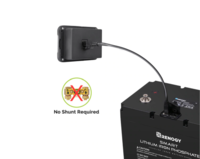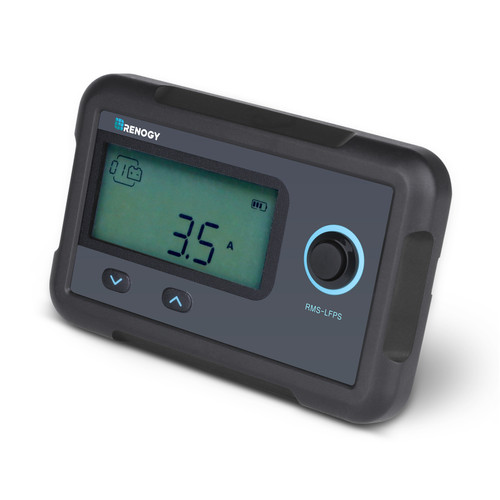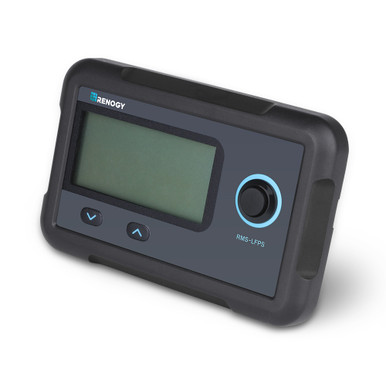You are using an out of date browser. It may not display this or other websites correctly.
You should upgrade or use an alternative browser.
You should upgrade or use an alternative browser.
Renogy DCC50S + 100Ah Smart Lithium Install
- Thread starter Rapt0rUK
- Start date
I used Raptors base as a guide too. I have solar and hookup in place. I've got a fairly standard van kitchen in. I haven't mounted it yet but have the IP65 Victron charger, the 15 amp one. They do like a slot in holster so going to mount in that so I can remove to use on something else if I need. I've got the connector at the back of the seat base then. My hookup runs from the back (already had a hole cut when I bought it) so I've run arctic cable from the consumer unit and going to most probably have a CBE mains socket to plug into as it's fairly small and unnoticeable.
For the 240 socket I’m looking for a suitable location, probably by the b post somewhere.
No, its one they have released that's specifically for their smart litho battery range...not available on their UK site yet though... I emailed them about it and they said it would be coming to the UK in August. I check fairly regularly, will be jumping on that as soon as it lands.Rapt0rUK is this the battery monitor you were looking to get?
View attachment 79579
It plugs straight into the RJ45 port on the battery so nice and easy! (no shunt needed)


Monitoring Screen for Smart Lithium Battery Series
The Renogy Monitoring Screen for Smart Lithium Battery Series is a high precision meter designed for Smart Lithium Iron Phosphate Battery in off-grid energy storage systems.
 www.renogy.com
www.renogy.com
A slight thread hijack here, sorry. I am looking at the dcc50s for my T6 conversion with an AGM battery and this seemed like the right place to ask my question, but happy to start my own thread if that is preferred.
Do I need to ensure that any battery I connect to this can handle at least a 50A charging rate? For instance, the battery here states in its specs for bulk charge :'Initial Charging Current less than 30A'.
Do I need to ensure that any battery I connect to this can handle at least a 50A charging rate? For instance, the battery here states in its specs for bulk charge :'Initial Charging Current less than 30A'.
Some of the experts (@Dellmassive) will be best placed to advise you bit I would guess that's not going to work as the Renogy pumps out 50amps
There’s a 30A version of that Renogy device now.
Pete

 www.t6forum.com
www.t6forum.com
Pete

[Guide] DC-DC Charger (for leisure battery) -- How I Done It --
I've just bought Travelvolts leisure battery, ctek, wiring bundle etc. What I'd like to ask some nice fellow, is what would be a good solid crimper/stripper set? Is this ok? Wire Crimper Stripper Set Meterk Multifunctional Crimping Tool With Carbon Steel Support 0.1-6mm² Adjustable Crimping...
There’s a 30A version of that Renogy device now.
Pete

[Guide] DC-DC Charger (for leisure battery) -- How I Done It --
I've just bought Travelvolts leisure battery, ctek, wiring bundle etc. What I'd like to ask some nice fellow, is what would be a good solid crimper/stripper set? Is this ok? Wire Crimper Stripper Set Meterk Multifunctional Crimping Tool With Carbon Steel Support 0.1-6mm² Adjustable Crimping...www.t6forum.com
Thanks Pete, there is, but it appears to only do 15A per input source. As most of my charging will be via alternator (a portable solar is a future option for longer trips), 15A output is a bit lower than what I would like.
I realise that it is unlikely with this setup that I would have solar and Alternator running at the same time, so the 50A version (25A per input source) should be fine, but I want to allow for a change in plans. A fixed solar panel could be installed in the future if we find our power consumption requires this, and I don't want to have to remember to disconnect the solar before starting the battery and risking damage.
So if it works the same as the 50a version, you get 25a per input source if it sees both. I.e. if you have solar connected, it will split 25a for the solar and 25a for alternator... But if you don't have solar as in my case you get the full 50a from the alternator.Thanks Pete, there is, but it appears to only do 15A per input source. As most of my charging will be via alternator (a portable solar is a future option for longer trips), 15A output is a bit lower than what I would like.
I realise that it is unlikely with this setup that I would have solar and Alternator running at the same time, so the 50A version (25A per input source) should be fine, but I want to allow for a change in plans. A fixed solar panel could be installed in the future if we find our power consumption requires this, and I don't want to have to remember to disconnect the solar before starting the battery and risking damage.
Check out Dell's lithium thread where this was discussed in detail. The plan is when I eventually add solar, to have an isolator switch on the solar input to make sure when driving I can kill that input and draw the max 50a from the alternator then when parked up, switch the solar on and get the max input from that. I don't plan to ever take an input from both at the same time.
I'm guessing here but if the 30a version mentions 15a per input source, it may well be the same setup..i.e 15a when both sources are run concurrently, 30a when running from just one.
So I just noticed in this epic post from @Dellmassive the following line:
(25+25=50A or 50+0=50A or 0+50=50A)
This made me realise that the device can actually deliver the maximum output (50A) from a single source (Alternator or Solar). In which case the 30A model could be perfect, but I am not 100% clear on how this works. My interpretation of the manual on the Renogy website is that:
(25+25=50A or 50+0=50A or 0+50=50A)
This made me realise that the device can actually deliver the maximum output (50A) from a single source (Alternator or Solar). In which case the 30A model could be perfect, but I am not 100% clear on how this works. My interpretation of the manual on the Renogy website is that:
- Installed with only Alternator or Solar, the device will allow the maximum current from that source (e.g. 30A or 50A depending on model)
- If installed with both inputs, the maximum current from a single source will be 50% (e.g. 15A or 25A)
It's as you say, dynamic, hence the plan for a solar isolator switch. If it sees any current at all from the solar it will automatically split the inputs so if you isolate the solar when driving, you will get the full 50a from the alternator and vice versa when stationary (engineer off), the full input from the solar. If you keep reading Dell's thread you'll see I went through exactly the same deliberation as you and came to the conclusion it's good to go, only difference (assuming the 30a works the same) I have a larger input profile.So I just noticed in this epic post from @Dellmassive the following line:
(25+25=50A or 50+0=50A or 0+50=50A)
This made me realise that the device can actually deliver the maximum output (50A) from a single source (Alternator or Solar). In which case the 30A model could be perfect, but I am not 100% clear on how this works. My interpretation of the manual on the Renogy website is that:
I guess I now need to seek confirmation of how #2 is configured. Is this a static setting, or is it dynamic (e.g. driving at night with no solar input will allow 100% from the alternator)?
- Installed with only Alternator or Solar, the device will allow the maximum current from that source (e.g. 30A or 50A depending on model)
- If installed with both inputs, the maximum current from a single source will be 50% (e.g. 15A or 25A)
It's as you say, dynamic, hence the plan for a solar isolator switch. If it sees any current at all from the solar it will automatically split the inputs so if you isolate the solar when driving, you will get the full 50a from the alternator and vice versa when stationary (engineer off), the full input from the solar. If you keep reading Dell's thread you'll see I went through exactly the same deliberation as you and came to the conclusion it's good to go, only difference (assuming the 30a works the same) I have a larger input profile.
Thanks, I also just realised this and was about to edit my post above. It turns out I cannot read a manual or a thread properly!
The manual actually states (with some condensing on my behalf):
Alternator Input (No solar panel, or night time) - 50A max
Solar Input (Engine not running) - 50A max
Dual Input (Both Alternator and Solar) - 25A/25A max
I guess I will order the 30A model as this perfectly meets my needs.
Assume it does but just check it works in the same logic. Manuals are available to download on their site.Thanks, I also just realised this and was about to edit my post above. It turns out I cannot read a manual or a thread properly!
The manual actually states (with some condensing on my behalf):
Alternator Input (No solar panel, or night time) - 50A max
Solar Input (Engine not running) - 50A max
Dual Input (Both Alternator and Solar) - 25A/25A max
I guess I will order the 30A model as this perfectly meets my needs.
Anyone with the BT-2 device? Are there any settings where you can set the max charge rate to the battery? I know in the MODBUS mappings it has a value, Im unsure whether you're able to set it or not though.
I have emailed Renogy to ask exactly the same question. I will let you know if I get a reply. What they did tell me in my first email about what information you can view via the BT-2 is below. They also confirmed the US and Australian models share identical specs, despite some of the AU marketing material not mentioning support for the BT-2 device.
You can monitor the following data of the DCC50S charger using the BT-2 module,
Battery type
house battery volts
starter battery volta
Combined charging amps
alternator charging amps
total charging watts
Total KWh generated
House battery temperature
DC DC battery charger temperature
If Renogy do ever get back to me, I am also going to ask them about the recommended fuse sizes:
If anyone knows where to source a 45, 65 or 75A fuse I would love to know. I assume the next best alternative is the 5A lower fuses which I can buy, so I will do 40A at both ends for my DCC30S charger.
| Model | Vehicle Input Fuse | Charger Output Fuse |
| DCC30S | 45A | 40A |
| DCC50S | 75A | 65A |
If anyone knows where to source a 45, 65 or 75A fuse I would love to know. I assume the next best alternative is the 5A lower fuses which I can buy, so I will do 40A at both ends for my DCC30S charger.
Heads up guys, the Renogy Smart Lithium Battery monitor is finally available for pre-order on the Renogy site along with various other items on offer as part of their end of summer sale.

 uk.renogy.com
uk.renogy.com

Monitoring Screen for Smart Lithium Battery Series
The Renogy Monitoring Screen for Smart Lithium Battery Series is a high precision meter designed for Smart Lithium Iron Phosphate Batteries in off-grid energy storage systems.
 uk.renogy.com
uk.renogy.com
Heads up guys, the Renogy Smart Lithium Battery monitor is finally available for pre-order on the Renogy site along with various other items on offer as part of their end of summer sale.

Monitoring Screen for Smart Lithium Battery Series
The Renogy Monitoring Screen for Smart Lithium Battery Series is a high precision meter designed for Smart Lithium Iron Phosphate Batteries in off-grid energy storage systems.uk.renogy.com
Good spot, one now on back order!
Me too!Good spot, one now on back order!
Similar threads
- Replies
- 6
- Views
- 460
- Replies
- 3
- Views
- 146
- Replies
- 6
- Views
- 241
- Replies
- 4
- Views
- 671


